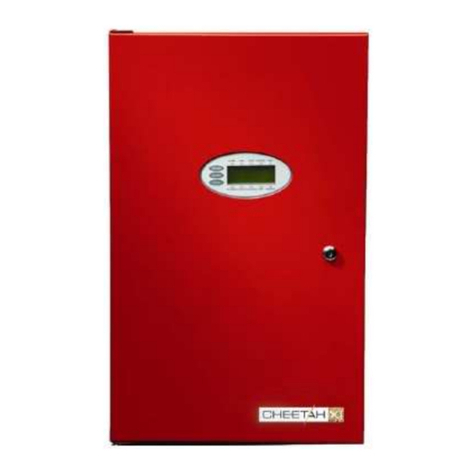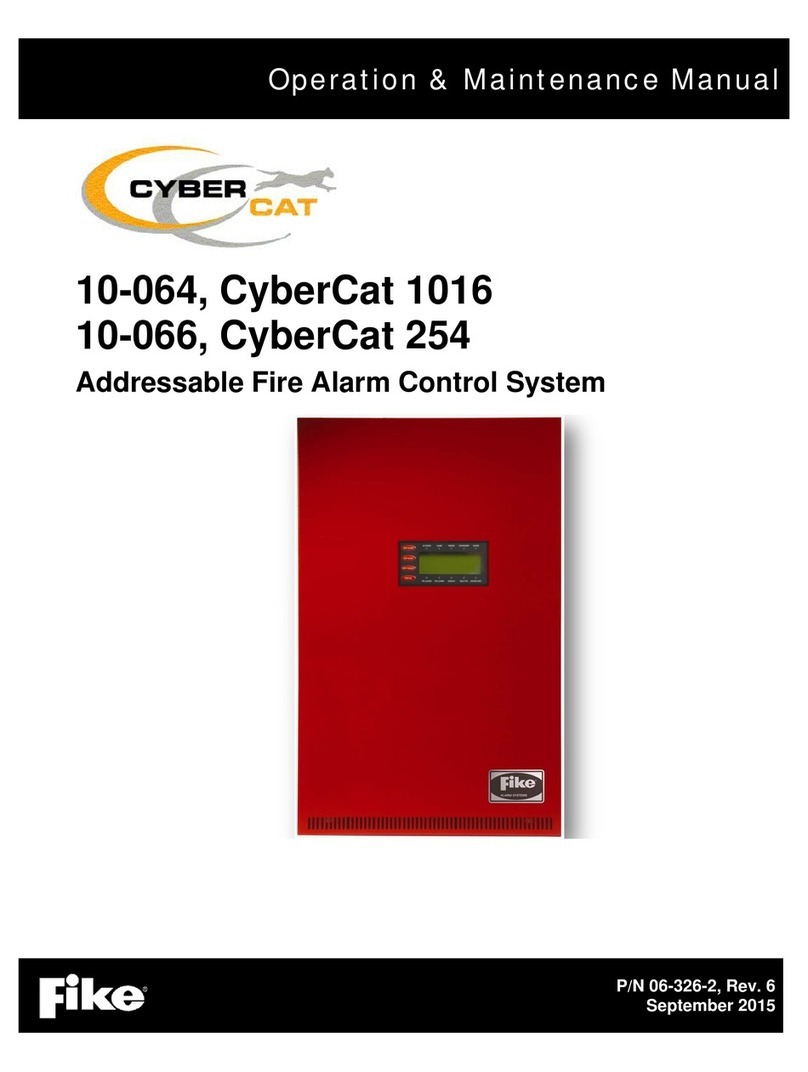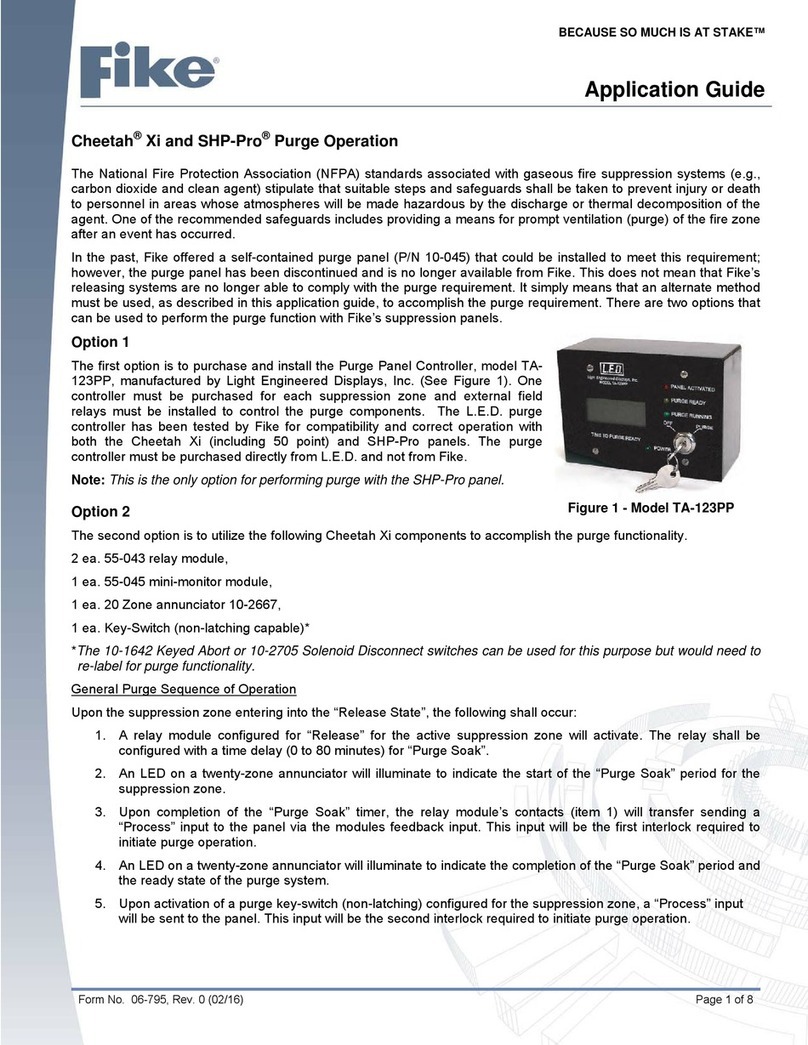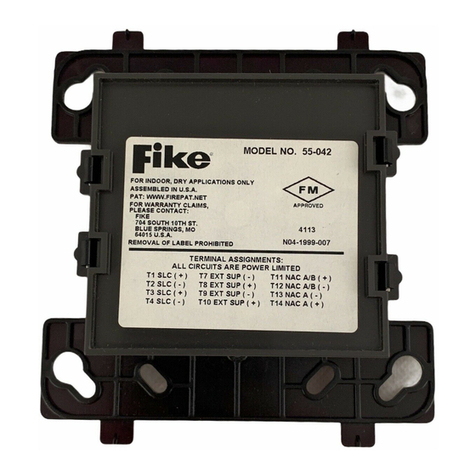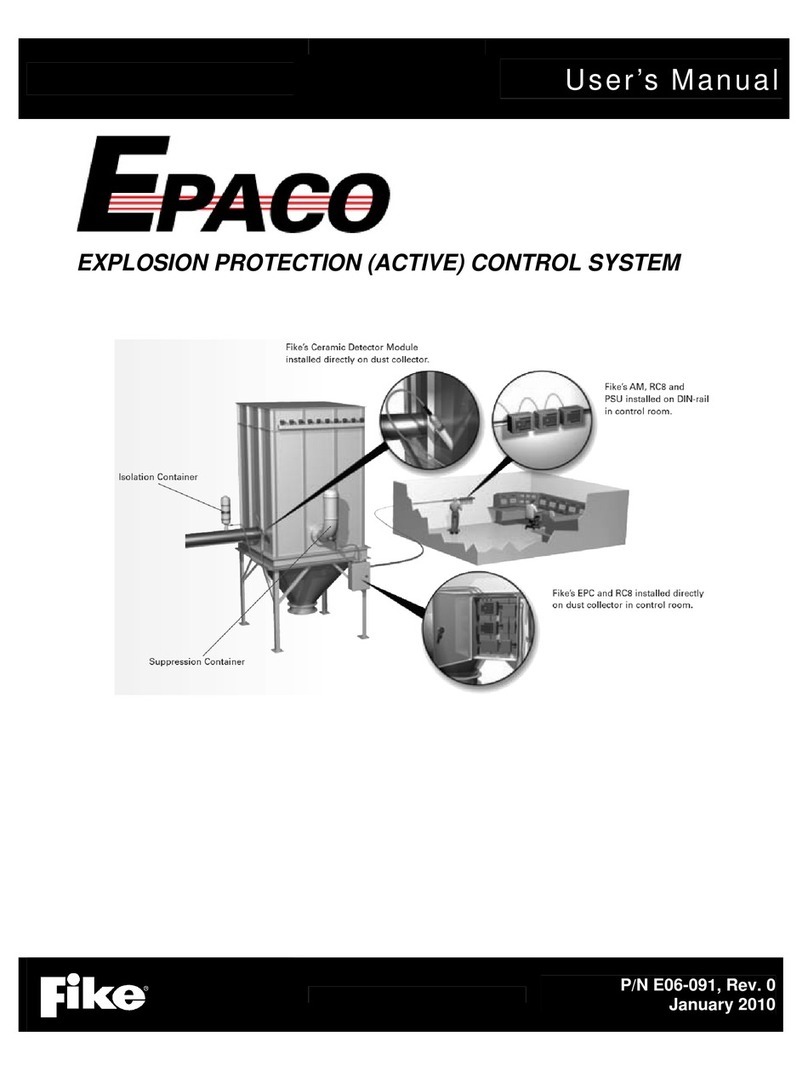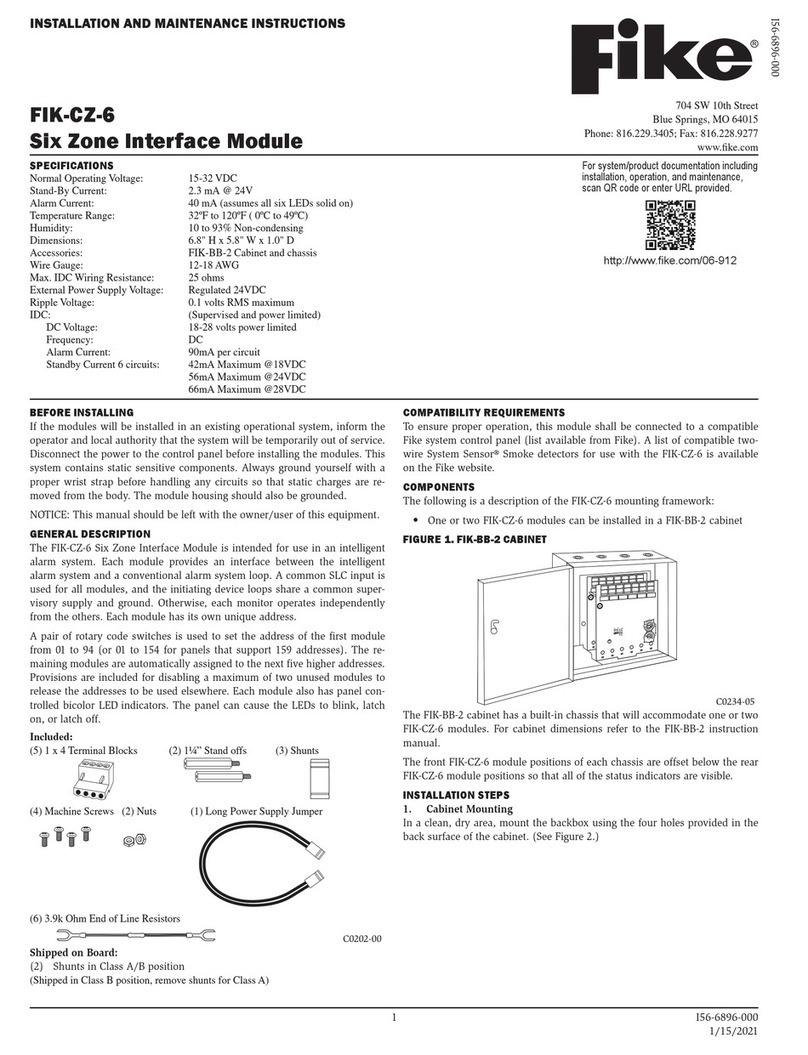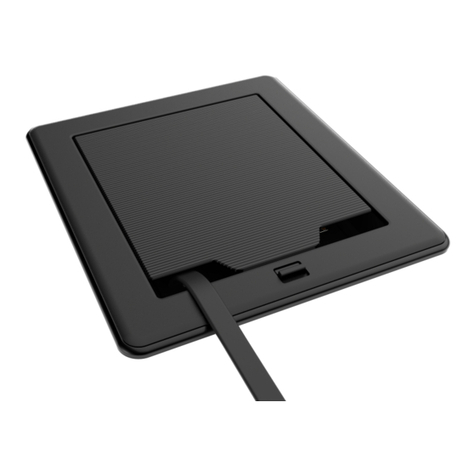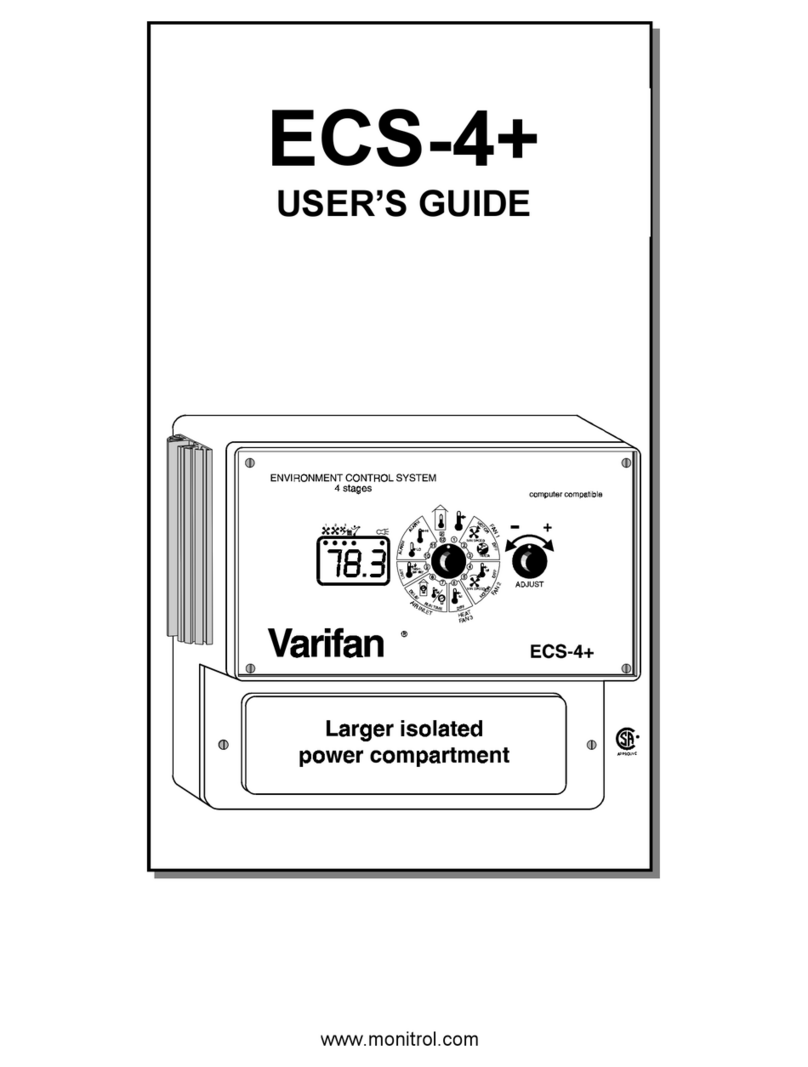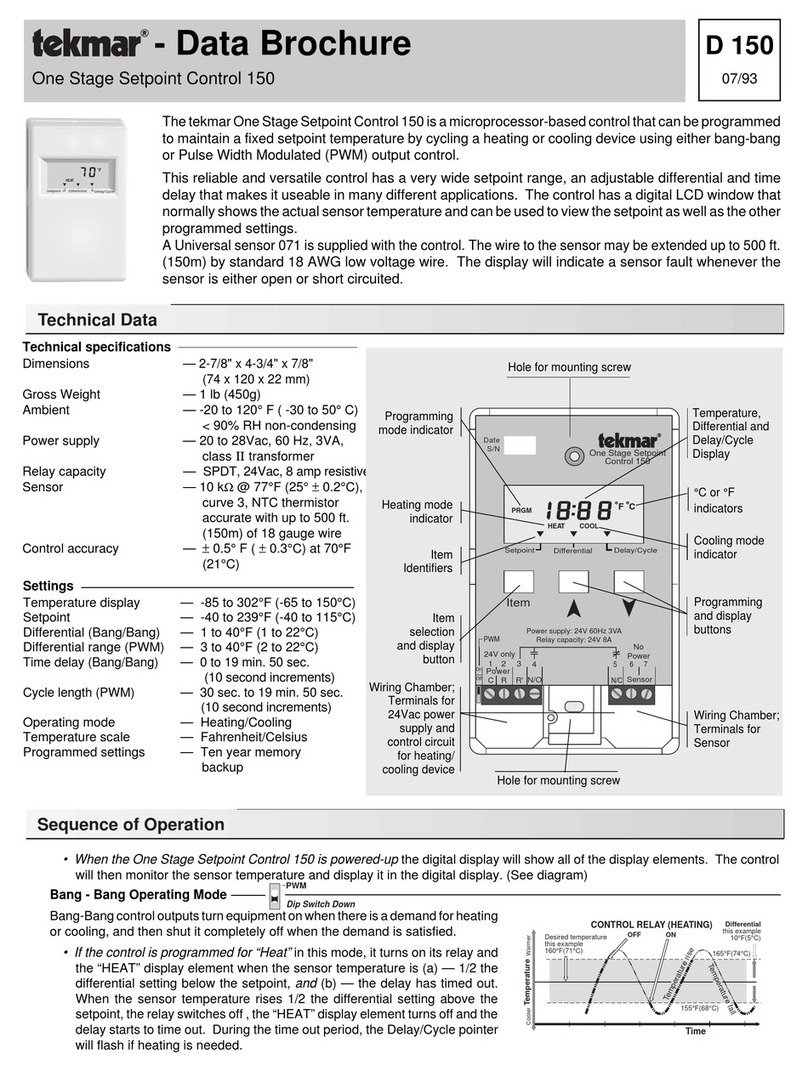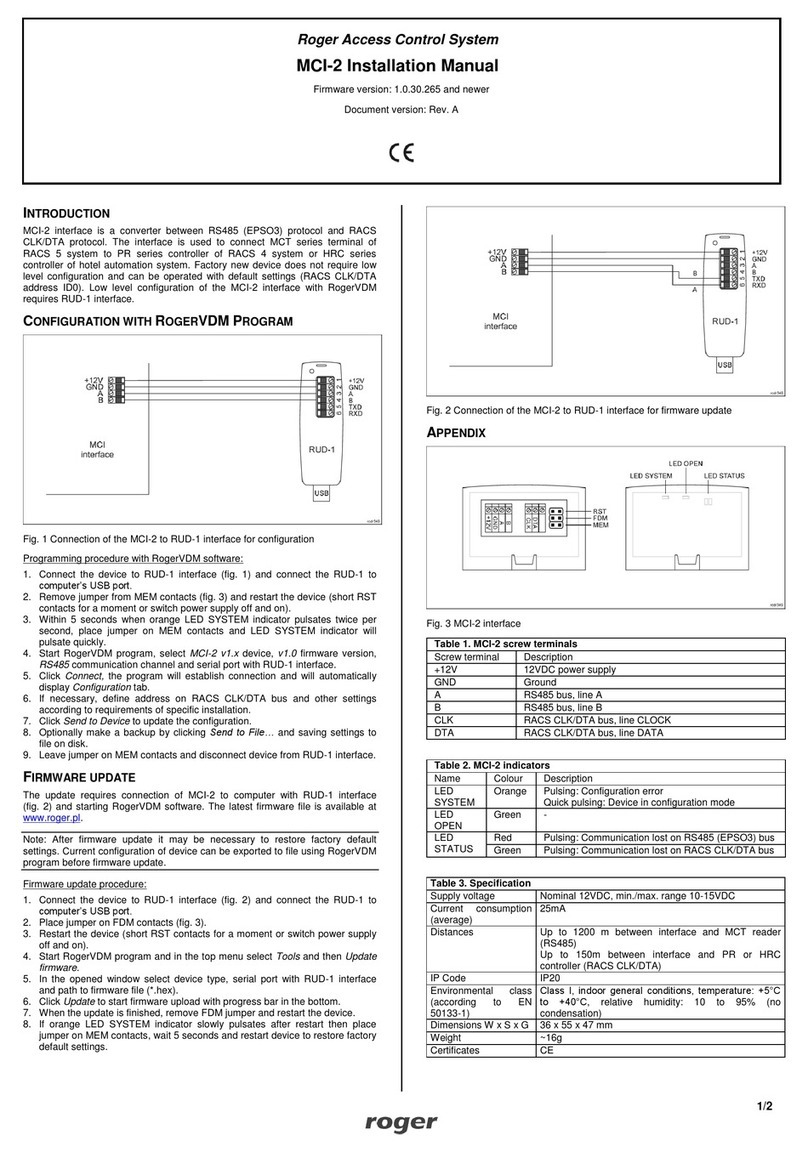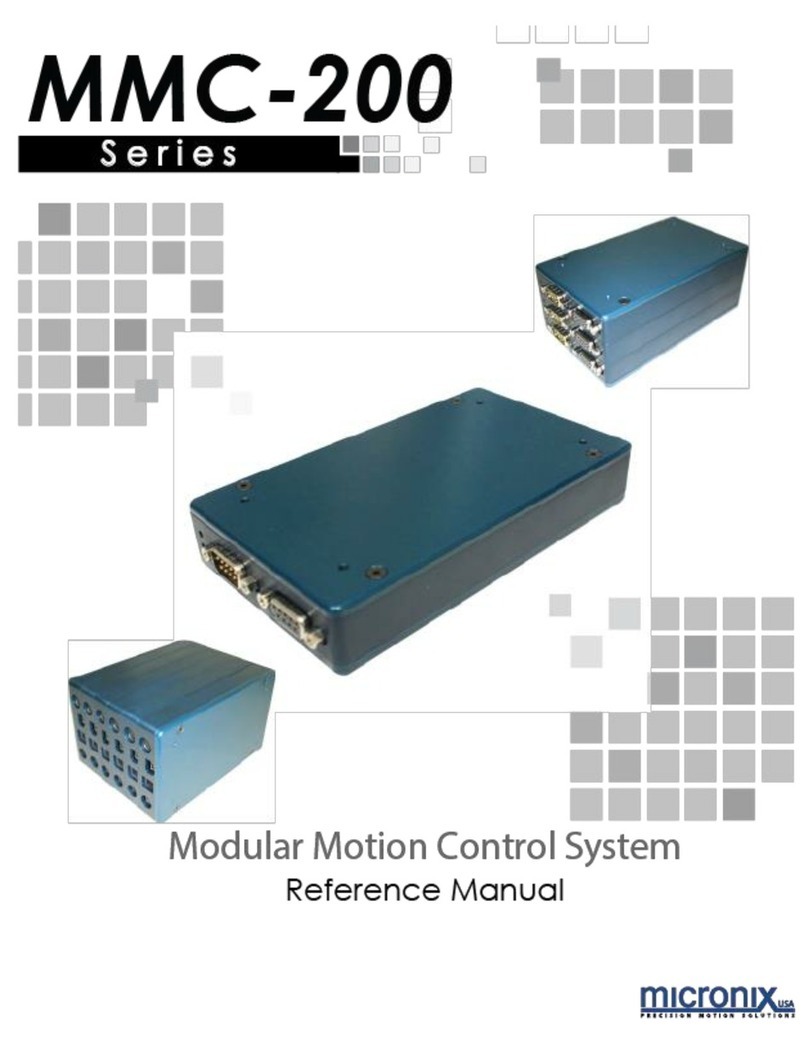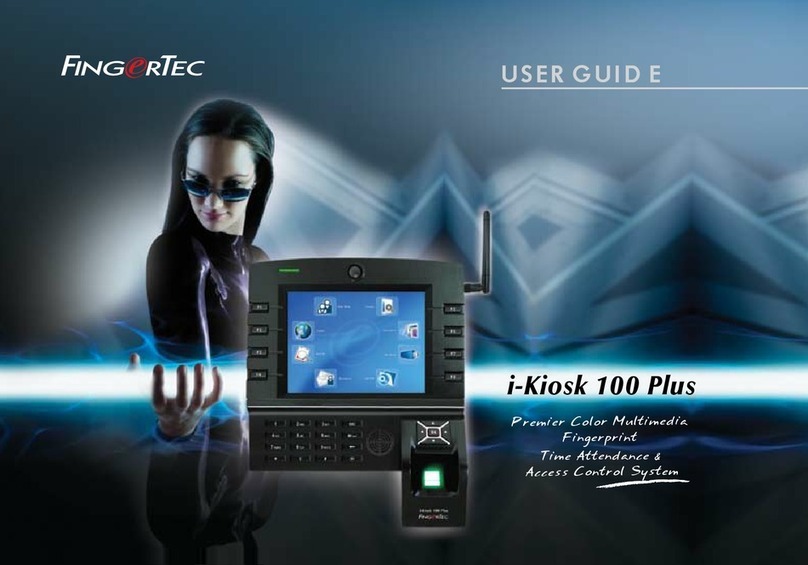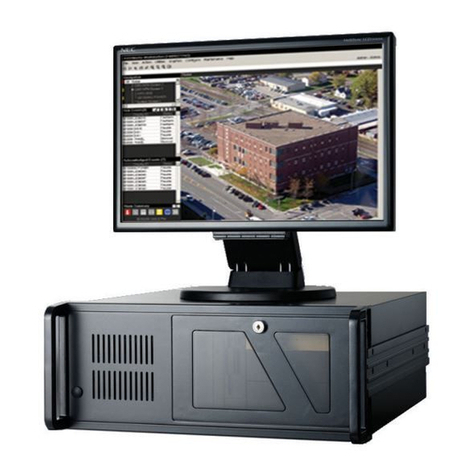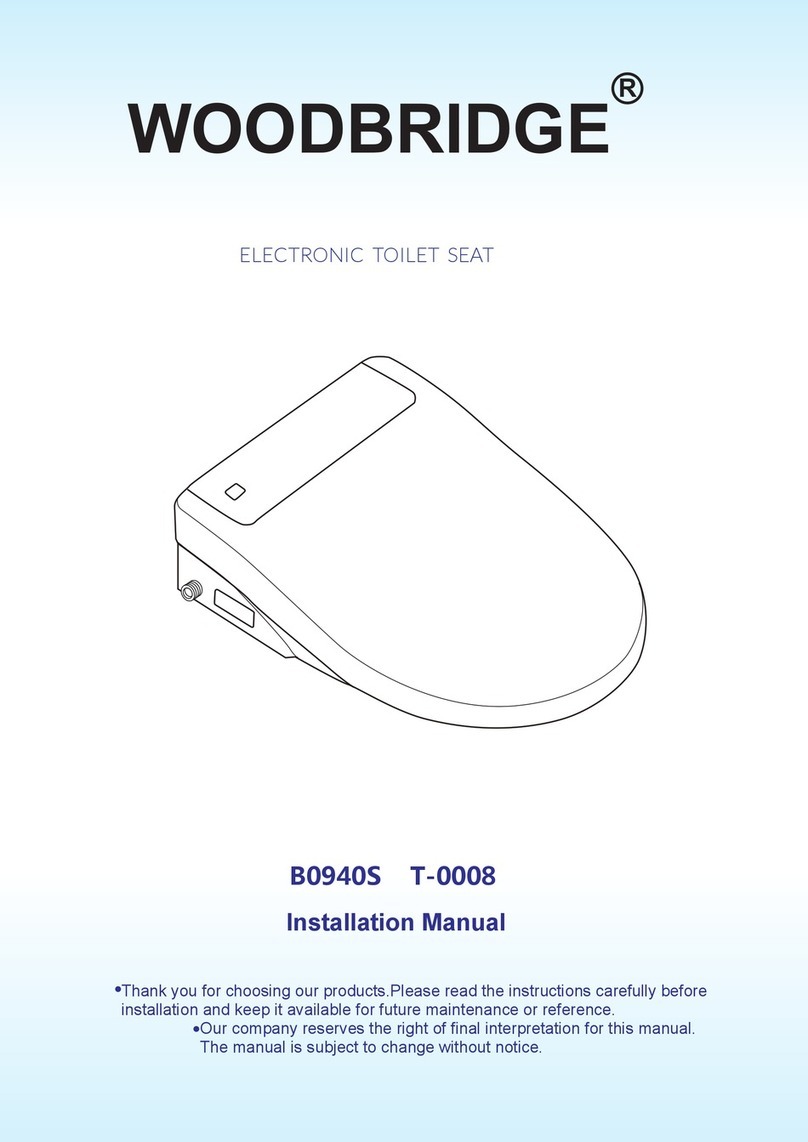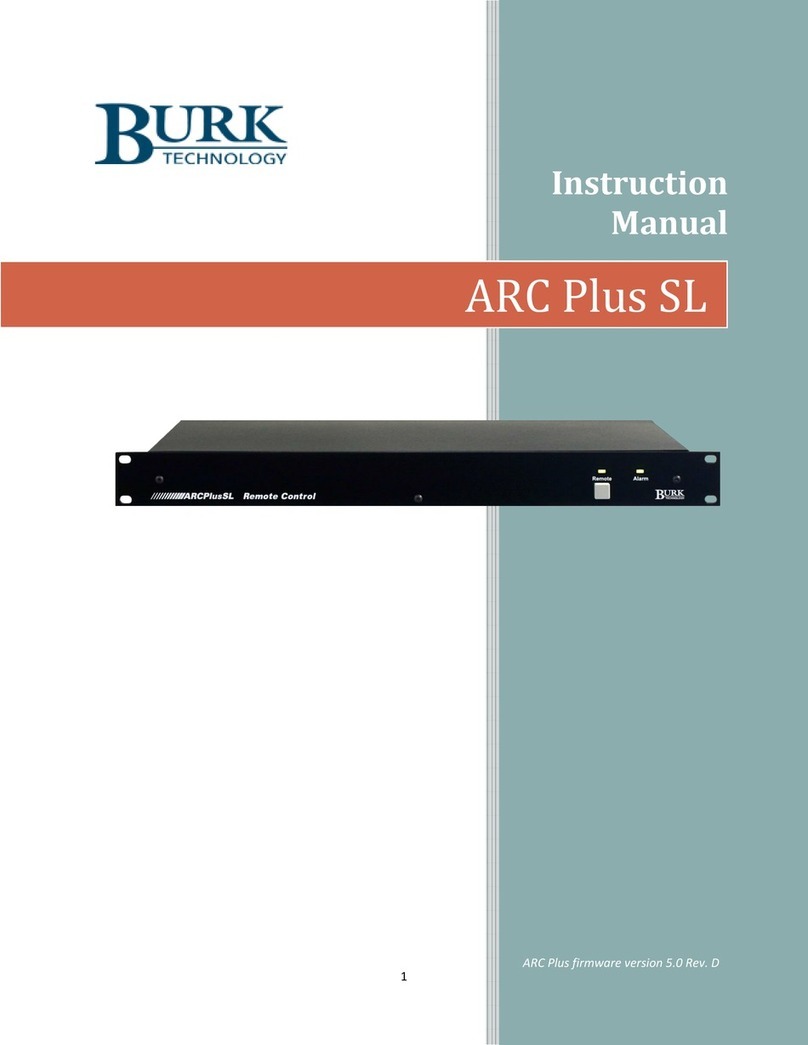Fike CyberCat 50 10-070 Manual

10-
0
Add
r
0
70,
r
essa
b
O
p
Cyb
e
b
le Fir
e
p
erat
i
e
rC
a
e
Alar
m
i
on &
a
t®5
0
m
Con
t
Main
0
t
rol S
y
tena
n
y
stem
n
ce M
P/N 06-36
8
Au
anua
l
8
-2, Rev. 4
u
gust 2013
l

DEVELOPED BY Fike
704 SW 10th Street
P.O. Box 610
Blue Springs, Missouri 64013 U.S.A.
Phone: (888) 628-FIKE (3453)
(816) 229-3405
Fax: (866) 211-9239
COPYRIGHT NOTICE Copyright ©2011. All rights reserved.
Fike copyrights this manual and products it describes. You may not reproduce,
transmit, transcribe, or any part of this manual without express, written
permission from Fike.
This manual contains proprietary information intended for distribution to
authorized persons or companies for the sole purpose of conducting business
with Fike. If you distribute any information contained in this manual to
unauthorized persons, you have violated all distributor agreements and we may
take legal action.
TRADEMARKS Fike©is a registered trademark of Fike.
CyberCat®is a registered trademark of Fike.
QUALITY Fike has maintained ISO 9001 certification since 1996. Prior to shipment, we
thoroughly test our products and review our documentation to assure the highest
quality in all respects.
WARRANTY Fike provides a one-year limited manufacturer’s warranty on this product. All
warranty returns must be returned from an authorized Fike Distributor. Contact
Fike’s Marketing department for further warranty information.
Fike maintains a repair department that is available to repair and return existing
electronic components or exchange/purchase previously repaired inventory
component (advance replacement). All returns must be approved prior to return.
A Material Return Authorization (MRA) number must be indicated on the box of
the item being returned. Contact the appropriate Regional Sales Manager for
further information regarding product return procedures.
LIMITATIONS OF LIABILITY Installation in accordance with this manual, applicable codes, and the
instructions of the Authority Having Jurisdiction is mandatory. Fike can not be
held liable for any incidental or consequential damages arising from the loss of
property or other damages or losses resulting from the use or misuse of Fike
products beyond the cost of repair or replacement of any defective components.
Fike reserves the right to make product improvements and change product
specifications at any time.
While every precaution has been taken during the preparation of this manual to
ensure the accuracy of its content, Fike assumes no responsibility for errors or
omissions.

CONTENTS
UL S2203 CyberCat 50 Operation Manual i
FM 3029134 P/N: 06-368-2 Rev 4, 08/2013
REVISION HISTORY
Document Title: CyberCat 50 Addressable Fire Alarm System Operation and Maintenance Manual
Document Reorder Number: 06-368-2
Revision Section Date Reason for Change
3 All Sections 04/2012
Separated manual into separate
Installation, Operation and Programming
Manuals; added MNS updates; added
FAAST detector updates
4 Sections 1, 3, 6, and Appendix A 08/2013 Added programming features for AHU
restart, audio sync, and MNS activation via
SLC input modules.

CONTENTS
ii CyberCat 50 Operation Manual UL S2203
Rev 4, 08/2013 P/N: 06-368-2 FM 3029134
TABLE OF CONTENTS
SECTION DESCRIPTION PAGE
1.0 Introduction....................................................................................................................1-1
1.1 About This Manual...........................................................................................................1-1
1.2 Product Support...............................................................................................................1-1
1.3 Safety Information............................................................................................................1-1
1.4 Related Documentation ...................................................................................................1-1
1.5 Understanding CyberCat 50 ............................................................................................1-2
1.5.1 System Controller.............................................................................................................1-2
1.5.2 Intelligent Addressable Devices.......................................................................................1-2
1.5.3 Peripheral Devices...........................................................................................................1-2
1.5.4 Emergency Communication System................................................................................1-3
1.6 UL Operational Limitations...............................................................................................1-4
2.0 User Interface.................................................................................................................2-1
2.1 CyberCat 50 Main Display ...............................................................................................2-1
2.1.1 System Status LEDs........................................................................................................2-2
2.1.2 History Navigation Buttons...............................................................................................2-3
2.1.3 Control Buttons ................................................................................................................2-3
2.1.4 Navigation and Function Buttons.....................................................................................2-4
2.1.5 LCD Display.....................................................................................................................2-5
2.1.5.1 System Normal Display....................................................................................................2-5
2.1.5.2 System Event Display......................................................................................................2-6
2.1.5.3 Top Level Menu ...............................................................................................................2-7
2.2 Password Protection........................................................................................................2-8
2.2.1 Logging onto the System.................................................................................................2-9
2.2.2 Changing the System Administrator Password ...............................................................2-9
3.0 System Operation ..........................................................................................................3-1
3.1 General Operation............................................................................................................3-1
3.1.1 AC Trouble Delay.............................................................................................................3-1
3.1.2 Daylight Savings ..............................................................................................................3-1
3.1.3 Silence Inhibit...................................................................................................................3-1
3.1.4 Silence Reminder.............................................................................................................3-2
3.1.5 State Counters.................................................................................................................3-2
3.1.6 Network Operation...........................................................................................................3-2
3.1.7 Positive Alarm Sequence.................................................................................................3-2
3.1.8 Emergency Communication Operation............................................................................3-3
3.1.8.1 Voice System Priorities....................................................................................................3-4
3.1.9 Device LED Operation .....................................................................................................3-4
3.2 Panel Menu Structure ......................................................................................................3-4
3.3 Panel Operation by Event................................................................................................3-5
3.3.1 Power-Up Reset...............................................................................................................3-5
3.3.2 Normal State....................................................................................................................3-6
3.3.3 Alarm/Waterflow State .....................................................................................................3-7
3.3.4 Alarm Verification.............................................................................................................3-8
3.3.5 Summing Alarm State......................................................................................................3-9
3.3.6 Trouble State..................................................................................................................3-10
3.3.7 Supervisory State...........................................................................................................3-11
3.3.8 Pre-Alarm State..............................................................................................................3-12
3.3.9 Process State.................................................................................................................3-13
3.3.10 Zone Disable State.........................................................................................................3-14
3.3.11 Drill State........................................................................................................................3-15
3.3.12 Walk-Test Operation......................................................................................................3-16

CONTENTS
UL S2203 CyberCat 50 Operation Manual iii
FM 3029134 P/N: 06-368-2 Rev 4, 08/2013
SECTION DESCRIPTION PAGE
3.3.13 Fan Restart Operation................................................................................................... 3-17
3.3.13.1 AHU Fire Key................................................................................................................. 3-17
3.4 Intelligent Sensor Features............................................................................................ 3-18
3.4.1 Alarm Verification .......................................................................................................... 3-18
3.4.2 Pre-Alarm....................................................................................................................... 3-18
3.4.3 Acclimate....................................................................................................................... 3-19
3.4.4 Drift Compensation........................................................................................................ 3-19
3.4.5 Day/Night/Holiday Settings............................................................................................ 3-19
3.4.6 Flame Enhance ............................................................................................................. 3-19
3.4.7 Summing........................................................................................................................ 3-19
3.4.8 Smolder ......................................................................................................................... 3-19
3.4.9 Walk-Test....................................................................................................................... 3-19
4.0 System History .............................................................................................................. 4-1
4.1 Overview.......................................................................................................................... 4-1
4.2 Viewing History................................................................................................................ 4-1
4.2.1 Alarm History................................................................................................................... 4-3
4.2.2 Supervisory History ......................................................................................................... 4-3
4.2.3 Trouble History................................................................................................................ 4-4
4.2.4 Events History ................................................................................................................. 4-4
4.2.5 Zone History.................................................................................................................... 4-5
4.2.6 Erase History................................................................................................................... 4-5
4.2.7 Viewing Additional Event Information.............................................................................. 4-6
5.0 System Diagnostics ...................................................................................................... 5-1
5.1 Overview.......................................................................................................................... 5-1
5.2 Diagnosing Problems ...................................................................................................... 5-1
5.3 Removing or Replacing Panel Components ................................................................... 5-1
5.4 Removing or Replacing Field Devices ............................................................................ 5-2
5.5 Diagnostic Menu 1........................................................................................................... 5-3
5.5.1 Device Diagnostic............................................................................................................ 5-3
5.5.1.1 Device Type, Location and LED Diagnostic.................................................................... 5-4
5.5.1.2 Device Serial Number Diagnostic.................................................................................... 5-5
5.5.2 Value 1 Diagnostic........................................................................................................... 5-6
5.5.3 Value 2 Diagnostic........................................................................................................... 5-7
5.5.4 LED Test.......................................................................................................................... 5-7
5.5.5 CRC (Cyclic Redundancy Count).................................................................................... 5-7
5.6 Diagnostic Menu 2........................................................................................................... 5-8
5.6.1 Keypad Diagnostic........................................................................................................... 5-8
5.6.2 VESDA 1 Diagnostic........................................................................................................ 5-9
5.6.3 VESDA 2 Diagnostic...................................................................................................... 5-10
5.6.4 Peripheral Diagnostic .................................................................................................... 5-10
5.6.4.1 Fire-Phone Diagnostic................................................................................................... 5-11
5.6.5 VESDAnet Communications.......................................................................................... 5-12
5.7 Diagnostic Menu 3......................................................................................................... 5-13
5.7.1 Network Diagnostic 1..................................................................................................... 5-13
5.7.2 Network Diagnostic 2..................................................................................................... 5-14
5.7.3 Network Diagnostic 3..................................................................................................... 5-15
5.7.4 History Diagnostic.......................................................................................................... 5-15
5.7.5 Board Communication Diagnostics............................................................................... 5-16

CONTENTS
iv CyberCat 50 Operation Manual UL S2203
Rev 4, 08/2013 P/N: 06-368-2 FM 3029134
SECTION DESCRIPTION PAGE
5.8 Diagnostic Menu 4 .........................................................................................................5-16
5.8.1 Amplifier Operation Status.............................................................................................5-17
5.8.2 Amplifier Supervision Data.............................................................................................5-18
5.8.3 Voice Zones...................................................................................................................5-21
5.8.3.1 Voice Zones Status........................................................................................................5-22
5.8.4 Amplifier Firmware Version............................................................................................5-22
5.9 Diagnostic Menu 5 .........................................................................................................5-23
5.9.1 Page Status....................................................................................................................5-23
5.9.2 Audio Priority Status.......................................................................................................5-24
5.9.3 Play Message ID Status.................................................................................................5-25
5.9.4 FAAST Detector Status..................................................................................................5-26
5.10 Voltages.........................................................................................................................5-27
6.0 System Maintenance .....................................................................................................6-1
6.1 Overview..........................................................................................................................6-1
6.2 Routine Maintenance.......................................................................................................6-1
6.3 Fuse Replacement...........................................................................................................6-2
6.4 Panel Maintenance Menus ..............................................................................................6-3
6.4.1 Maintenance Menu 1 .......................................................................................................6-3
6.4.1.1 Device Read.....................................................................................................................6-3
6.4.1.2 Device Address................................................................................................................6-4
6.4.1.3 Device Replace................................................................................................................6-5
6.4.1.4 Walk-Test.........................................................................................................................6-7
A. Panel Walk-Test...............................................................................................................6-8
B. IR Tool Walk-Test ............................................................................................................6-9
6.4.1.5 Buzzer..............................................................................................................................6-9
6.4.2 Maintenance Menu 2 .....................................................................................................6-10
6.4.2.1 Mass Notification System Reset....................................................................................6-10
6.4.2.2 Mass Notification System Silence..................................................................................6-11
6.4.2.3 Switch Timeout Operation..............................................................................................6-11
6.4.2.4 Device Configuration Read............................................................................................6-12
6.4.2.5 FAAST............................................................................................................................6-12
6.4.2.6 AHU ON.........................................................................................................................6-13
Appendix A
A.1 CyberCat 50 Menu Structure (V6.00) ..............................................................................
A-1

CONTENTS
UL S2203 CyberCat 50 Operation Manual v
FM 3029134 P/N: 06-368-2 Rev 4, 08/2013
LIST OF EXHIBITS
EXHIBIT DESCRIPTION PAGE
1-1 Related Documentation................................................................................................... 1-1
1-2 thru 1-33 Programming Features.....................................................................................1-2 thru 1-33
2-1 CyberCat 50 Main Display............................................................................................... 2-1
2-2 Status LEDs..................................................................................................................... 2-2
2-3 Status LED Descriptions.................................................................................................. 2-2
2-4 System Normal Display................................................................................................... 2-5
2-5 System Event Display...................................................................................................... 2-6
2-6 Panel-Loop-Address Display........................................................................................... 2-6
2-7 Expanded Custom Message Display .............................................................................. 2-6
2-8 Top Level Menu............................................................................................................... 2-7
2-9 Password Access Levels................................................................................................. 2-8
2-10 Password Entry Screen................................................................................................... 2-9
2-11 Password Entry Screen................................................................................................... 2-9
3-1 Record New Device Display............................................................................................ 3-5
3-2 Power-Up Reset Display ................................................................................................. 3-5
3-3 System Normal Display................................................................................................... 3-6
3-4 Alarm Display .................................................................................................................. 3-7
3-5 Alarm Verification Display................................................................................................ 3-8
3-6 Summing Alarm Display.................................................................................................. 3-9
3-7 Trouble Display.............................................................................................................. 3-10
3-8 Supervisory Display....................................................................................................... 3-11
3-9 Pre-Alarm Display.......................................................................................................... 3-12
3-10 Process Display............................................................................................................. 3-13
3-11 Zone Disable Display..................................................................................................... 3-14
3-12 Drill Display.................................................................................................................... 3-15
3-13 Walk Test Display.......................................................................................................... 3-16
3-14 Sensor Programming Features ..................................................................................... 3-18
4-1 Current Events Screen.................................................................................................... 4-1
4-2 Old Events Screen........................................................................................................... 4-1
4-3 Top Level Menu............................................................................................................... 4-2
4-4 History Menu ................................................................................................................... 4-2
4-5 Alarm History Screen....................................................................................................... 4-3
4-6 Supervisory History Screen............................................................................................. 4-3
4-7 Trouble History Screen.................................................................................................... 4-4
4-8 Events History Screen..................................................................................................... 4-4
4-9 3,200 Events History Screen........................................................................................... 4-4
4-10 Zone History Screen........................................................................................................ 4-5
4-11 Erase History Screen....................................................................................................... 4-5
4-12 Erase History Status........................................................................................................ 4-5
4-13 Additional Information Screen ......................................................................................... 4-6
4-14 Custom Message Screen................................................................................................ 4-6

CONTENTS
vi CyberCat 50 Operation Manual UL S2203
Rev 4, 08/2013 P/N: 06-368-2 FM 3029134
EXHIBIT DESCRIPTION PAGE
5-1 Diagnostic Menu 1 ...........................................................................................................5-3
5-2 Device Diagnostic Menu ..................................................................................................5-3
5-3 Device Type Diagnostic Screen.......................................................................................5-4
5-4 Device Serial Number Diagnostic Screen........................................................................5-5
5-5 Value 1 Diagnostic Screen...............................................................................................5-6
5-6 Value 2 Diagnostic Screen...............................................................................................5-7
5-7 LED Test Screen..............................................................................................................5-7
5-8 CRC Diagnostic Screen...................................................................................................5-8
5-9 Diagnostic Menu 2 ...........................................................................................................5-8
5-10 Keypad Diagnostics Screen.............................................................................................5-9
5-11 VESDA 1 Diagnostics Screen..........................................................................................5-9
5-12 VESDA 2 Diagnostics Screen........................................................................................5-10
5-13 Peripheral Diagnostics Screen.......................................................................................5-10
5-14 Fire-Phone Diagnostics Screen.....................................................................................5-11
5-15 System Sensor Loop Diagnostics Screen .....................................................................5-11
5-16 Auxiliary Switch Cards Diagnostics Screen...................................................................5-12
5-17 VESDAnet Communication Screen ...............................................................................5-12
5-18 Diagnostic Menu 3 .........................................................................................................5-12
5-19 Network Diagnostics 1 Screen.......................................................................................5-13
5-20 Network Diagnostics 2 Screen.......................................................................................5-13
5-21 Network Diagnostics 3 Screen.......................................................................................5-14
5-22 History Diagnostics Screen............................................................................................5-14
5-23 Board Comm Diagnostics Screen..................................................................................5-15
5-24 Diagnostic Menu 4 .........................................................................................................5-15
5-25 Amplifier Operation Status Screen.................................................................................5-16
5-26 Amplifier Supervision Data Screen................................................................................5-17
5-27 Voice Zones Screen.......................................................................................................5-18
5-28 Firmware Version Screen ..............................................................................................5-19
5-29 Voltages.........................................................................................................................5-20
6-1 Controller Fuse Locations................................................................................................6-2
6-2 Maintenance Menu...........................................................................................................6-3
6-3 Device Read Screen........................................................................................................6-3
6-4 Device Address Screen ...................................................................................................6-4
6-5 Device Address Process Screen .....................................................................................6-4
6-6 Device Address/New Device Screen...............................................................................6-5
6-7 Device Address/Change Screen......................................................................................6-5
6-8 Device Replace Menu......................................................................................................6-5
6-9 Retrieving Configuration Screen......................................................................................6-6
6-10 Device Replace Screen ...................................................................................................6-6
6-11 Device Configuration Screen...........................................................................................6-6
6-12 Device Replace Success Screen.....................................................................................6-6
6-13 Walk Test Mode Screen...................................................................................................6-7
6-14 Walk Test Mode Screen...................................................................................................6-7
6-15 Buzzer Screen..................................................................................................................6-9
6-16 Maintenance Menu 2 .....................................................................................................6-10
6-17 Mass Notification System Reset....................................................................................6-10
6-18 MNS Silence Screen......................................................................................................6-11
6-19 Switch Timeout Screen..................................................................................................6-11
6-20 Configuration Read Screen............................................................................................6-12
6-21 FAAST Screen...............................................................................................................6-12
6-22 AHU On Screen .............................................................................................................6-13
A-1 Event Description/History Messages...............................................................................A-1

1.0 INTRODUCTION
UL S2203 CyberCat 50 Operation Manual 1-1
FM 3029134 P/N: 06-368-2 Rev 4, 08/2013
1.1 ABOUT THIS MANUAL
The purpose of this manual is to enable persons responsible for the CyberCat 50 system to operate, test and
perform maintenance of the system. It provides a detailed description of how the system operates in
response to different system events and recommended steps for resolution response to each event. Each
individual who will be required to interface with the panel during a system event should thoroughly read and
understand the instructions contained within this manual.
1.2 PRODUCT SUPPORT
If you have a question or encounter a problem not covered in this manual, you should first try to contact the
distributor that installed the protection system. Fike has a worldwide distribution network. Each distributor is
trained to properly sell, install, and service Fike equipment. Look on the inside of the door, left side, there
should be a sticker with an indication of the distributor who sold the system. If you can not locate the
distributor, please call Fike Customer Service for locating your nearest distributor, or go to our web-site at
www.fike.com. If you are unable to contact your installing distributor or you simply do not know who installed
the system you can contact Fike Fire Alarm Product Support at (888) 628-FIKE (3453) Option 2, Monday
through Friday, 8:00 AM to 4:30 PM CST.
1.3 SAFETY INFORMATION
Important safety admonishments are used throughout this manual to warn of possible hazards to persons or
equipment.
aWARNING
Warnings are used to indicate the presence of a hazard
which will or may cause personal injury or death, or loss of
service if safety instructions are not followed or if the hazard
is not avoided.
ICaution
Cautions are used to indicate the presence of a hazard
which will or may cause damage to the equipment if safety
instructions are not followed or if the hazard is not avoided.
LNotes: Notes indicate the message is important, but is not
of a Warning or Caution category. These notes can be of
great benefit to the user and should be read.
1.4 RELATED DOCUMENTATION
To obtain a complete understanding of the specific features of the CyberCat 50 or to become familiar with
related functions in general, refer to the documentation listed below. Please reference the most current
version or the version noted on the label located on the product.
Exhibit 1-1: Related Documentation
Document Title Part Number
CyberCat 50 Addressable Fire Alarm Control System Installation Manual 06-368
CyberCat Addressable Fire Alarm Control System Programming Manual 06-539

1.0 INTRODUCTION
1-2 CyberCat 50 Operation Manual UL S2203
Rev 4, 08/2013 P/N: 06-368-2 FM 3029134
1.5 UNDERSTANDING CYBERCAT 50
Many Fire Alarm systems today use relatively simple input and output devices that are connected to a central
controller. The central controller typically polls the input devices, either one at a time or in groups, and the
individual devices respond with some value. The controller then determines any action needed using the
preprogrammed logic that links the inputs with the appropriate output response.
Unlike the systems described above, the CyberCat 50 is a peer-to-peer system. It utilizes intelligent sensors
and output devices that not only include all necessary processing for decision making, but can also include
the control logic for system operation. The logic parameters, along with other device parameters are
downloaded to the devices during system configuration into nonvolatile memory. When an input device
determines that action should be taken using its downloaded parameters, it transmits a message onto the
system’s signaling line circuit (SLC). Output devices receive this message and use their downloaded
parameters to determine if they should take action. This direct communication between devices reduces
response time and reduces the amount of processing that must be performed by the CyberCat 50 controller.
1.5.1 SYSTEM CONTROLLER
Even though the command and control processing for the system is not performed by the CyberCat 50
controller, it is still an integral part of the system. Its primary function is to act as the communication hub for
the devices connected to the systems signaling line circuits (SLC). This provides a path that allows each
device to transmit and receive device status information with one another and the controller. The controller is
also responsible for providing the user interface, performing system timing, delivery of power to field devices,
storing system history events, supervising SLC devices, storing device custom messages, communicating
system events to peripheral devices and providing the system programming interface point.
1.5.2 INTELLIGENT ADDRESSABLE DEVICES
The CyberCat 50 system’s input and output devices are intelligent and maintain their own operating
configuration. The devices are connected to the CyberCat 50 controller’s signaling line circuits (SLC) and use
the SLCs to transmit and receive status information with one another and the control panel. Each SLC can
contain up to 50 devices in any combination. Each device must be assigned a unique address (1-50) for
proper supervision by the controller. When shipped from Fike, each device is addressed as Loop 0, Address
0. The device address must be changed (programmed) into the device during system installation using the IR
Tool (P/N 55-051) or Hand-Held Programmer (P/N 10-2648). The panel will also auto-address a new device
(default loop 0, address 0) when wired to the loop. It will recognize the new device by recording a DEVICE
NOT IN CONFIG trouble and automatically address it to the first available empty address on the loop (if on
exists).
1.5.3 PERIPHERAL DEVICES
The CyberCat 50 system’s RS485 peripheral bus provides an interface point that allows you to connect up to
31 optional peripheral devices to the system. These devices are used provide remote annunciation and
control of system events and to expand the system operational capabilities. In a network system, the
peripheral bus allows all panels to report to a single graphic panel for annunciation purposes. The peripheral
bus transmits both zone and panel status information. The same information is transmitted out the panels
RS232 bus as well.

1.0 INTRODUCTION
UL S2203 CyberCat 50 Operation Manual 1-3
FM 3029134 P/N: 06-368-2 Rev 4, 08/2013
1.5.4 EMERGENCY COMMUNICATION SYSTEM
The AAP1 (P/N 10-2831) and AAP3 (P/N 10-2832) audio adjunct panels are compact, self-contained, and
cost-effective digital audio adjunct panels that can be interfaced with the CyberCat 50 panel (firmware version
6.00 or higher) to provide the following ECS functions: In-building Fire Emergency Voice/Alarm
Communications (EVACS) and In-building Mass Notification (MNS).
The AAP1 and AAP3 provide a simple user interface that allows responding personnel to quickly and
accurately convey live or prerecorded fire or mass notification commands to building occupants. The AAP1
and AAP3 panels do not have fire-fighter’s phone capabilities.
Each audio adjunct panel includes a single, 50 watt, audio amplifier equipped with four Class B or A speaker
circuits standard. The amplifier is configurable for either 25 or 70 Vrms output. The amplifier is capable of
communicating information to a single audio zone (single channel) in order to facilitate an appropriate
response and action to a fire or emergency event. Two additional 50 watt amplifiers can be added to the
AAP3 to expand its output capabilities to serve up to three audio zones or to increase the single audio zone
output to 150 watts. Each amplifier is capable of storing up to sixteen (16) individual, custom audio messages
(maximum 30 seconds in length) and tones in a digital format on the board’s internal memory for playback.
Refer to Section 3.1.8 for further details.

1.0 INTRODUCTION
1-4 CyberCat 50 Operation Manual UL S2203
Rev 4, 08/2013 P/N: 06-368-2 FM 3029134
1.6 UL (90.23) OPERATIONAL LIMITATIONS
The following tables identify the configurable features that can be changed by using the panel’s programming
software C-Linx. The table also identifies features that are available, but are not permitted to be used per the
CyberCat 50 system’s UL listing.
Exhibit 1-2: Programming Features
NOTICE TO USERS, INSTALLERS, AUTHORITIES HAVING JURISDICTION, AND OTHER INVOLVED PARTIES
This product incorporates field-programmable software. In order for the product to comply with the requirements in the Standard for Control Units and Accessories for
Fire Alarm Systems, UL 864, certain programming features or options must be limited to specific values or not used at all as indicated below.
Circuit or
Component Program Feature or Option
Permitted
in UL
864?
(Y/N) Possible Settings
(Defaults shown bold)
Settings
permitted
in UL 864 Notes
Main Board Configuration Options
MISC. Miscellaneous Options
AC Trouble Delay Y 0-30 hours, Default 2 hours 1–3
Voice Panel Priorities
•Alarm Y 0-254, Default 4 3
•Test Alarm Y 0-254, Default 5 3
•Supervisory Y 0-254, Default 6 3
•Process Y 0-254, Default 7 3
Locality Y
Standard / Boston / Chicago
/ New York Standard 4
Voice States on Loop Y Enabled / Disabled 5
Drill/Silence/Acknowledge N
Enabled / Disabled Enabled 1,2
Auto Message Y Enabled / Disabled
Walktest Y
Enabled / Disabled
Supervision Options
Transformer Y
120VAC / 240VAC
Loop Style (SLC) Y A, B, or X
Ground Fault Level 1 N Enabled / Disabled Enabled 2
Ground Fault Level 2 N Enabled / Disabled Enabled 2,7
Main Battery Y Supervised / Unsupervised
Eclipse Device Error Trouble Y Enabled / Disabled Enabled 6
AHU Fire Dept Key Required for
AHU Restart Y Enabled / Disabled
Battery Cutoff Y Loop # and Address #
(L: 1-4 Address: 0-50)
Notes:
1. City of Chicago does not allow use of Drill, Silence and Acknowledge switches.
2. Can only be changed with Factory Level password.
3. Voice Panel Priority allows the user to program a priority scheme for Fire events and MNS events. 0 is used for systems where
priority is not required (0 = None; 1 = Highest and 254 = Lowest).
4. Locality setting is configured for operation of local jurisdiction requirements for Boston, Chicago and New York only. Outside of
these jurisdictions, the setting should be set to Standard.
5. Alert, Evac, Page and MNS Active manual activation events are broadcast to the SLC’s to activate or de-activate outputs
connected to the SLC.
6. If device on SLC has an internal error the panel produces a trouble state (Enabled) and does not just log the event into its
history buffer (Disabled). (i.e. Checksum Error)
7. Level 2 ground fault detection required for use with solenoids.

1.0 INTRODUCTION
UL S2203 CyberCat 50 Operation Manual 1-5
FM 3029134 P/N: 06-368-2 Rev 4, 08/2013
Exhibit 1-3: Programming Features Cont.
Circuit or
Component Program Feature or Option
Permitted
in UL
864?
(Y/N) Possible Settings
(Defaults shown bold)
Settings
permitted
in UL 864 Notes
MISC. Silence Options
Unsilence Time Y 1-24 hours
Silence Reminder Y Enabled / Disabled
Silence Inhibit Y Enabled / Disabled
Positive Alarm Sequence Y Enabled / Disabled
Silence Mode Y UL UL 1
Time
Functions Alarm Sensitivity Changes
Daytime Sensitivities start/stop Y 12:00 AM – 12:00 AM
Days that use daytime sensitivity Y Sunday – Saturday
Use Daylight Savings Time Y Enabled / Disabled
Holiday Schedule
Night time sensitivity Y 20 days total (mm/dd/yyyy) 4
DACT Auto Test
DACT Auto test start hour Y 0 – 23 (2 default)
DACT Auto test period (hrs.) Y 0- 24
NAC P8 and P9 (NAC 1 & NAC 2)
Sync Protocol Y NO / Gentex / System
Sensor / Wheelock 2,3
State (Activation) Y Alarm / Pre-Alarm 1 / Pre-
Alarm 2 / Supervisory /
Trouble / Process
Silenceable Y
Silenceable / Non
silenceable
Zone Assignment Y 1 – 254
Circuit Y
Enabled / Disabled
Drill Y
Enabled / Disabled
Walktest Y
Enabled / Disabled
Panel Sync Protocol Y Gentex / System Sensor /
Wheelock
Relays P2 Main Board Relay
Relay Selection Y R1 / R2 5
State (Activation) Y Alarm / Pre-Alarm 1 / Pre-
Alarm 2 / Supervisory /
Trouble / Process / Zone
Disable
Silenceable Y
Non-Silenceable /
Silenceable
Relay Y
Enabled / Disabled
Zone Assignment Y 1 – 254
Drill Y
Enabled / Disabled
Notes:
1. An audible signal that has been silenced at the protected premises shall automatically resound and remain energized until
silenced and retransmit the signal to any supervising station to which the original signal was transmitted, as applicable, at least
once every 24 hours until the condition is corrected and the product is restored to the normal supervisory condition.
2. If synchronization is selected, both NAC circuits will use the same sync protocol.
3. Refer to Fike document 06-186 for compatible notification appliances.
4. Only allows the installer to assign the night time sensitivity to a different obscuration level than during normal working hours.
No other functions are affected or disabled.
5. Allows on board relays to be configured from the default setting of Alarm for R1 and Supervisory for R2 to the states listed in
State (Activation).

1.0 INTRODUCTION
1-6 CyberCat 50 Operation Manual UL S2203
Rev 4, 08/2013 P/N: 06-368-2 FM 3029134
Exhibit 1-4: Programming Features Cont.
Circuit or
Component Program Feature or Option
Permitted
in UL
864?
(Y/N) Possible Settings
(Defaults shown bold)
Settings
permitted
in UL 864 Notes
Zones Zones Y
1 – 254
Type Y
Alarm Zone
Custom Message Y 20 character user defined
Voice EVAC Mapping Y Zones 1 - 254
Voice Alert Mapping Y Zones 1 - 254
Zone Enabled Y Enabled / Disabled
Zone Chimes Y Assign chime code to zones
Peripherals Message Y 20 character user defined
(PERIPHERAL ID 02) 1
Zone Assignment Y 0- 254 1
Supervision Y
Unsupervised / Supervised 1
Voice Y
No Voice / EVAX / Fike
Status Y
STD / EXP 2
History Transmit Y Compact / Verbose 3
History Packing Y Unpacked / Packed 4
History Message Y STD / EXP 5
Dual Channel Voice Y Enabled / Disabled
Notes:
1. Peripheral device must be added to the Peripherals list before these configuration options are available.
2. This command contains status for Alarm, Supervisory, Trouble and all other states. Peripheral devices that have firmware
version before 3.00 should set this variable to STD, which is the original CyberCat format. The ESP selection refers to an
“Expanded” format. Peripheral devices with 3.00 firmware or newer will used this command. The EXP setting speeds up
operation of the peripheral bus.
3. If set to COMPACT, a message filter within the panel is used to prevent transmission of certain history record events, including
the NEW DEVICE history messages. This is done so that the peripherals do not display messages that are not required. If set
to VERBOSE, all history messages are transmitted.
4. HISTORY PACKING refers to how many history records are transmitted back-to-back with minimum time in between. If set to
UNPACKED, history records are sent one at a time. If set to PACKED, up to 50 history records are sent back-to-back. This
will speed up transmission of large amounts of history data.
5. HISTORY MESSAGE refers to what kind of data is packed into the history command. If set to STD (standard), data is packed
as with previous versions. If set to EXP (expanded), both lines 1 and 2 of the history data as shown on the LCD of the panel is
packed into the history command.

1.0 INTRODUCTION
UL S2203 CyberCat 50 Operation Manual 1-7
FM 3029134 P/N: 06-368-2 Rev 4, 08/2013
Exhibit 1-5: Programming Features Cont.
Circuit or
Component Program Feature or Option
Permitted
in UL
864?
(Y/N) Possible Settings
(Defaults shown bold)
Settings
permitted
in UL 864 Notes
Network Network Settings
Network Address (Panel ID) Y 1- 128
Network Module Type Y None / First / Middle / Last 1
Network Panel Message Y 20 character user defined
(CUSTOM MSG PANEL 001)
where ZZZ = zone number
Network Switch Operation Y Global / Local 2
Network Switch IDs Y 1– 128
Selects which network
devices the panel will receive
switch commands from.
Network Zones Y 1 – 254 3
Panel Supervision Y 1 – 254 4
Wiring Style Y Style 4 / Style 7
History Y
Single / Multiple
Ethernet Settings
Source IP Address Y 000.000.000.000
User Defined 5
Destination IP Address Y 000.000.000.000
User Defined 6
Supervision IP Address Y 000.000.000.000
User Defined 7
Panel IP Supervision Y 000.000.000.000 4
History Transmits Y 1– 10
(Fike recommends 2)
Supervision Timeout Y 1 – 59 (Sec., Min., Hour)
4 min. default
IP Time Y IP Time Disabled
Accept IP Time
Send IP Time
8
Notes:
1. Defines the location of the panel with respect to others on the network.
2. Defines if the respective panel will react to Reset, Silence, Acknowledge, and Drill commands received from other networked
panels.
3. Defines which network zones will participate in the local panel zone(s).
4. Defines which network panel(s) the selected panel should supervise.
5. Defines the unique Internet Protocol (IP) address for the selected panel.
6. Defines the unique Internet Protocol (IP) address for the panel that is to receive history events from the selected panel.
7. Defines the unique Internet Protocol (IP) address for the panel that is to supervision responses from the selected panel.
8. Used to synchronize panel time over the network.

1.0 INTRODUCTION
1-8 CyberCat 50 Operation Manual UL S2203
Rev 4, 08/2013 P/N: 06-368-2 FM 3029134
Exhibit 1-6: Programming Features Cont.
Circuit or
Component Program Feature or Option
Permitted
in UL
864?
(Y/N) Possible Settings
(Defaults shown bold)
Settings
permitted
in UL 864 Notes
Defaults
(Photo
Sensor)
Common
Loop Number of Device Y 1 1
Address of Device Y 1– 50
Custom Message Y 60 character user defined
(1-001 PHOTO DETECT
Loop 1 - Address 001)
Y Default / User Defined
Zone Assignments Y 1– 254 2
Alarm Verification Y Time: 0 – 60 seconds
Y Enabled / Disabled
Sensitivity
Pre-Alarm 1 & 2 Levels Y Enabled / Disabled
Y 0.5%/ft. – 4.0%/ft.
(0.1%/ft. increments) 3
Alarm Levels Y Acclimate: 1.3%/ft. – 3.6%/ft.
(High 2.0% - Low 2.5%) 4
Y Day/Night: 1.3%/ft. – 3.6%/ft.
(Day 3.6% - Night 3.6%)
Y Alarm / Supervisory /
Supervisory NL
Drift Compensation
(Warning/Trouble) Y 50 – 100%
Warning 80%/Trouble 100% 5
Walktest Y
Walktest at Alarm Level /
Walktest with IR / Walktest at
1.3%
Device Summing
Broadcast Thresholds for
Summing (%OBS) N Enabled / Disabled
(8 levels 0.5%/ft. – 4.0%/ft. in
0.1%/ft. increments)
Summing Activation Level
(%OBS) N 1.0 – 10%/ft.
(0.5%/ft. increments)
Summing Broadcast State No Disabled / Alarm / Summing
Alarm / Supervisory Latching
/ Supervisory Non-Latching /
Pre-Alarm 1 / Pre-Alarm 2
Summing Addresses No 1 – 8 (Device addresses to
participate in summing
group)
Notes:
1. CyberCat 50 has only one (1) addressable loop with a maximum of 50 devices.
2. Can be assigned to 4 discrete zones, 2 zone ranges or 1 range and 2 discrete zones.
3. Pre-Alarm 2 setting must always be set equal or higher than Pre-Alarm 1 setting.
4. High setting must be equal or lower obscuration setting than Low setting.
5. Can be set in 1% increments. Trouble must be higher % than Warning.

1.0 INTRODUCTION
UL S2203 CyberCat 50 Operation Manual 1-9
FM 3029134 P/N: 06-368-2 Rev 4, 08/2013
Exhibit 1-7: Programming Features Cont.
Circuit or
Component Program Feature or Option
Permitted
in UL
864?
(Y/N) Possible Settings
(Defaults shown bold)
Settings
permitted
in UL 864 Notes
Defaults
(Photo
Sensor)
Remote Annunciator
Annunciator Type Y None / Remote LED –
Follows Red / Remote LED –
Follows Green / Remote LED
– Follows Amber / Remote
LED – Independent /
Sounder Base / Relay Base
1,2
Silenceable Y
Silenceable / Non- Silence 2
Positive Alarm Sequence (PAS) Y Disabled / Enabled 2
Output Settings – Priority Row Y 1 – 8 1
Activation State Y No State / Alarm / Summing
Alarm / Test Alarm / Alarm
Verification ON / Pre-Alarm 1
/ Pre-Alarm 2 / Supervisory /
Trouble / Open Circuit
Trouble / Short Circuit
Trouble / Low Power Trouble
/ Maintenance Trouble /
Process / Zone Disable
Switch / Voice Alert / Voice
Evacuate / Voice Page /
Voice Play Message ID
Action Type Y No Action / Activate on
Any of 3 zones / Activate
on All of 3 zones / Activate
on Specific Device /
Activate on multiple
priority rows active
Output Pattern Y OFF / ON Continuous /
Slow / Fast / Temporal /
Walktest / Alert / Action
State Counter Y 1 – 16
Notes:
1. If annunciator type is set to Independent Operation, Sounder Base, or Relay Base an 8-row priority table will be displayed.
Table values are set using the Output Settings fields.
2. If annunciator type is set to Sounder Base, Silence and Positive Alarm Sequence (PAS) options will be displayed.

1.0 INTRODUCTION
1-10 CyberCat 50 Operation Manual UL S2203
Rev 4, 08/2013 P/N: 06-368-2 FM 3029134
Exhibit 1-8: Programming Features Cont.
Circuit or
Component Program Feature or Option
Permitted
in UL
864?
(Y/N) Possible Settings
(Defaults shown bold)
Settings
permitted
in UL 864 Notes
Defaults
(Photo/Heat
Sensor)
Common
Loop Number of Device Y 11
Address of Device Y 1– 50
Custom Message Y 60 character user defined
(1-001 PHO/HT DETECT
Loop 1 - Address 001)
Y Default / User Defined
Zone Assignments Y 1– 254 2
Alarm Verification Y Time: 0 – 60 seconds
Y Enabled / Disabled
Sensitivity
Pre-Alarm 1 & 2 Levels Y Enabled / Disabled
Y 0.5%/ft. – 4.0%/ft.
(0.1%/ft. increments) 3
Alarm Levels Y Acclimate: 1.3%/ft. – 3.6%/ft.
(High 2.0% - Low 2.5%) 4
Y Day/Night: 1.3%/ft. – 3.6%/ft.
(Day 3.6% - Night 3.6%)
Y Alarm / Supervisory /
Supervisory NL
Flame Enhance N ON / OFF
Drift Compensation
(Warning/Trouble) Y 50 – 100%
Warning 80%/Trouble 100% 5
Walktest Y
Walktest at Alarm Level /
Walktest with IR / Walktest at
1.3%
Device Summing
Broadcast Thresholds for
Summing (%OBS) N Enabled / Disabled
(8 levels 0.5%/ft. – 4.0%/ft. in
0.1%/ft. increments)
Summing Activation Level
(%OBS) N 1.0 – 10%/ft.
(0.5%/ft. increments)
Summing Broadcast State N Disabled / Alarm / Summing
Alarm / Supervisory Latching /
Supervisory Non-Latching /
Pre-Alarm 1 / Pre-Alarm 2
Summing Addresses N 1 – 8 (Device addresses to
participate in summing group)
Remote Annunciator (See Exhibit 1-7 for programming features)
Notes:
1. CyberCat 50 has only one (1) addressable loop with a maximum of 50 devices.
2. Can be assigned to 4 discrete zones, 2 zone ranges or 1 range and 2 discrete zones.
3. Pre-Alarm 2 setting must always be set equal or higher than Pre-Alarm 1 setting.
4. High setting must be equal or lower obscuration setting than Low setting.
5. Can be set in 1% increments. Trouble must be higher % than Warning.

1.0 INTRODUCTION
UL S2203 CyberCat 50 Operation Manual 1-11
FM 3029134 P/N: 06-368-2 Rev 4, 08/2013
Exhibit 1-9: Programming Features Cont.
Circuit or
Component Program Feature or Option
Permitted
in UL
864?
(Y/N) Possible Settings
(Defaults shown bold)
Settings
permitted
in UL 864 Notes
Defaults
(Photo/Duct
Sensor)
Common
Loop Number of Device Y 11
Address of Device Y 1– 50
Custom Message Y 60 character user defined
(1-001 DUCT DETECT
Loop 1 - Address 001)
Y Default / User Defined
Zone Assignments Y 1– 254 2
Alarm Verification Y Time: 0 – 60 seconds
Y Enabled / Disabled
Sensitivity
Pre-Alarm 1 & 2 Levels Y Enabled / Disabled
Y 0.6%/ft. – 4.0%/ft.
(0.1%/ft. increments) 3
Alarm Levels Y Acclimate: 0.8%/ft. – 3.4%/ft.
(High 2.0% - Low 2.5%) 4
Y Day/Night: 0.8%/ft. – 3.4%/ft.
(Day 1.5% - Night 3.4%)
Y Alarm / Supervisory /
Supervisory NL
Drift Compensation
(Warning/Trouble) Y 50 – 100%
Warning 80%/Trouble 100% 5
Walktest Y
Walktest at Alarm Level /
Walktest with IR / Walktest at
1.3%
Device Summing
Broadcast Thresholds for
Summing (%OBS) N Enabled / Disabled
(8 levels 0.5%/ft. – 4.0%/ft. in
0.1%/ft. increments)
Summing Activation Level
(%OBS) N 1.0 – 10%/ft.
(0.5%/ft. increments)
Summing Broadcast State N Disabled / Alarm / Summing
Alarm / Supervisory Latching
/ Supervisory Non-Latching /
Pre-Alarm 1 / Pre-Alarm 2
Summing Addresses N 1 – 8 (Device addresses to
participate in summing group)
Remote Annunciator (See Exhibit 1-7 for programming features)
Notes:
1. CyberCat 50 has only one (1) addressable loop with a maximum of 50 devices.
2. Can be assigned to 4 discrete zones, 2 zone ranges or 1 range and 2 discrete zones.
3. Pre-Alarm 2 setting must always be set equal or higher than Pre-Alarm 1 setting.
4. High setting must be equal or lower obscuration setting than Low setting.
5. Can be set in 1% increments. Trouble must be higher % than Warning.

1.0 INTRODUCTION
1-12 CyberCat 50 Operation Manual UL S2203
Rev 4, 08/2013 P/N: 06-368-2 FM 3029134
Exhibit 1-10: Programming Features Cont.
Circuit or
Component Program Feature or Option
Permitted
in UL
864?
(Y/N) Possible Settings
(Defaults shown bold)
Settings
permitted
in UL 864 Notes
Defaults
(Heat
Sensor)
Common
Loop Number of Device Y 11
Address of Device Y 1– 50
Custom Message Y 60 character user defined
(1-001 HEAT DETECT
Loop 1 - Address 001)
Y Default / User Defined
Zone Assignments Y 1– 254 2
Alarm Verification Y Time: 0 – 60 seconds
Y Enabled / Disabled
Sensitivity
Pre-Alarm 1 & 2 Levels Y Enabled / Disabled
Y 70°F - 190°F
(5°F increments) 3
Alarm Levels (Day/Night) Y Fixed Temp: 135°F - 190°F
(5°F increments) 4
Y Rate of Rise: 135°F - 174°F
(5°F increments) 4
Walktest Y
Walktest at 135°F / Walktest
with IR
Remote Annunciator (See Exhibit 1-7 for programming features)
Notes:
1. CyberCat 50 has only one (1) addressable loop with a maximum of 50 devices.
2. Can be assigned to 4 discrete zones, 2 zone ranges or 1 range and 2 discrete zones.
3. Pre-Alarm 2 setting must always be set equal or higher than Pre-Alarm 1 setting.
4. Rate of Rise temperature range is 135°F - 174°F. Fixed temperature operation will be used for detection above this range.
Table of contents
Other Fike Control System manuals
Popular Control System manuals by other brands
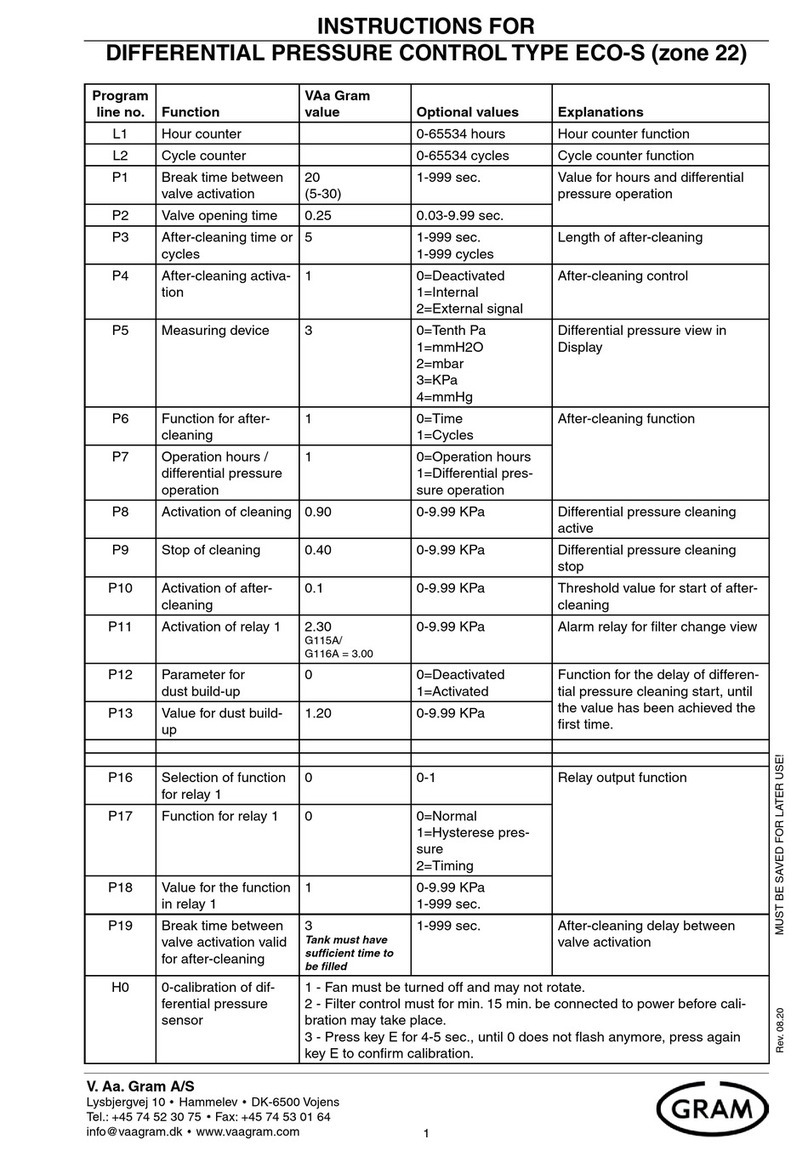
Gram
Gram ECO-S instructions

Cleveland
Cleveland HA-SE-CC Specifications
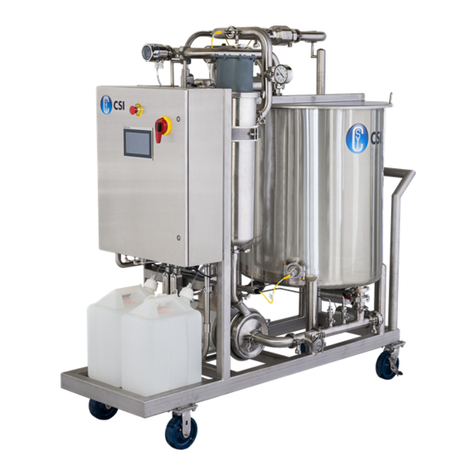
CSI
CSI COMPACT CIP Installation operation & maintenance
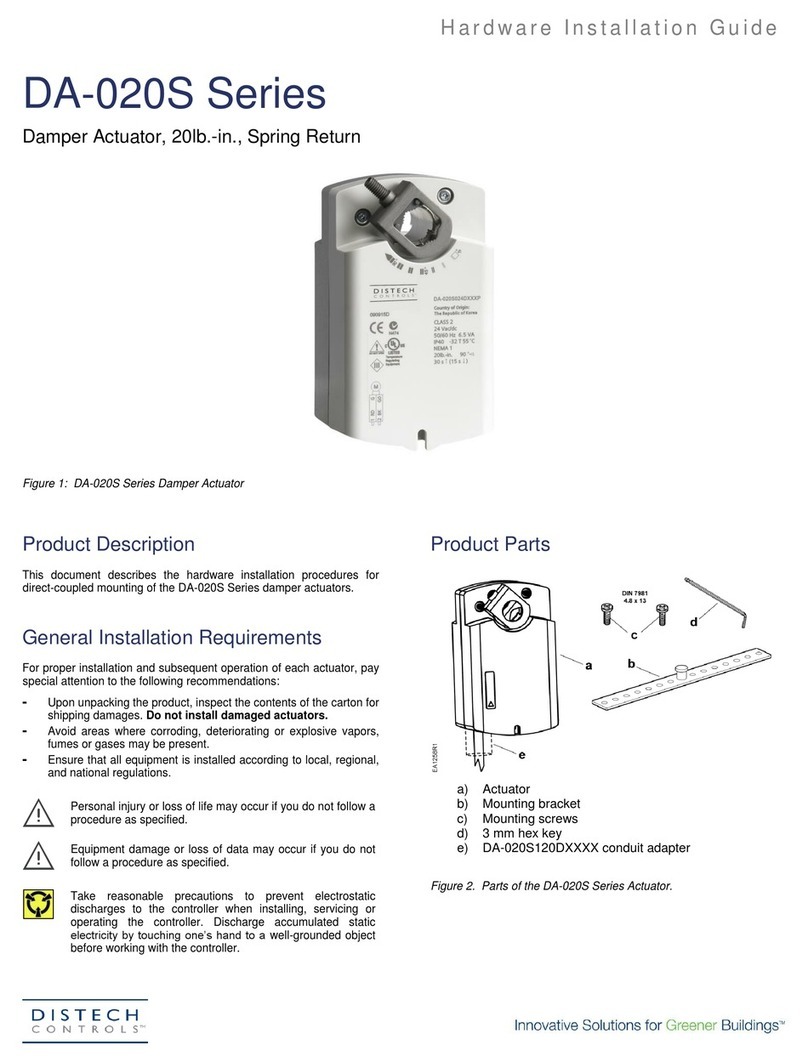
Distech Controls
Distech Controls DA-020S Series Hardware installation guide
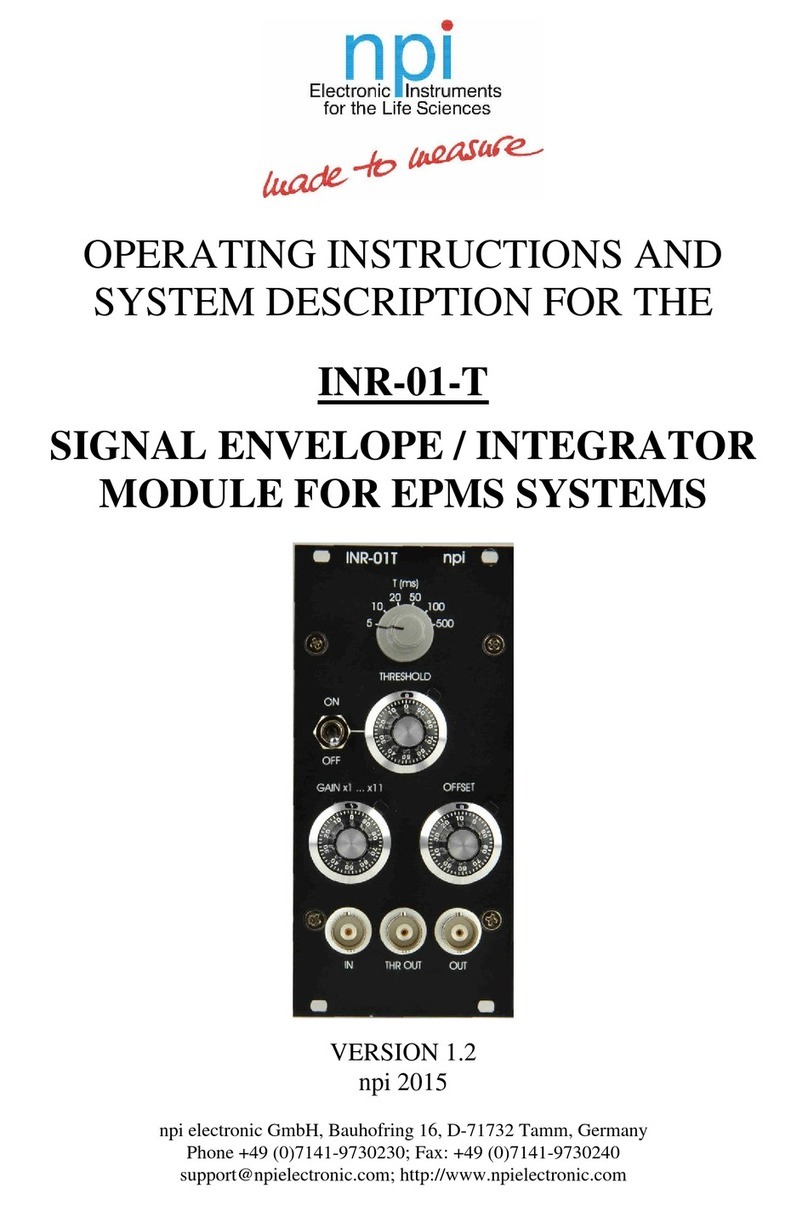
NPI
NPI INR-01-T Operating instructions and system description
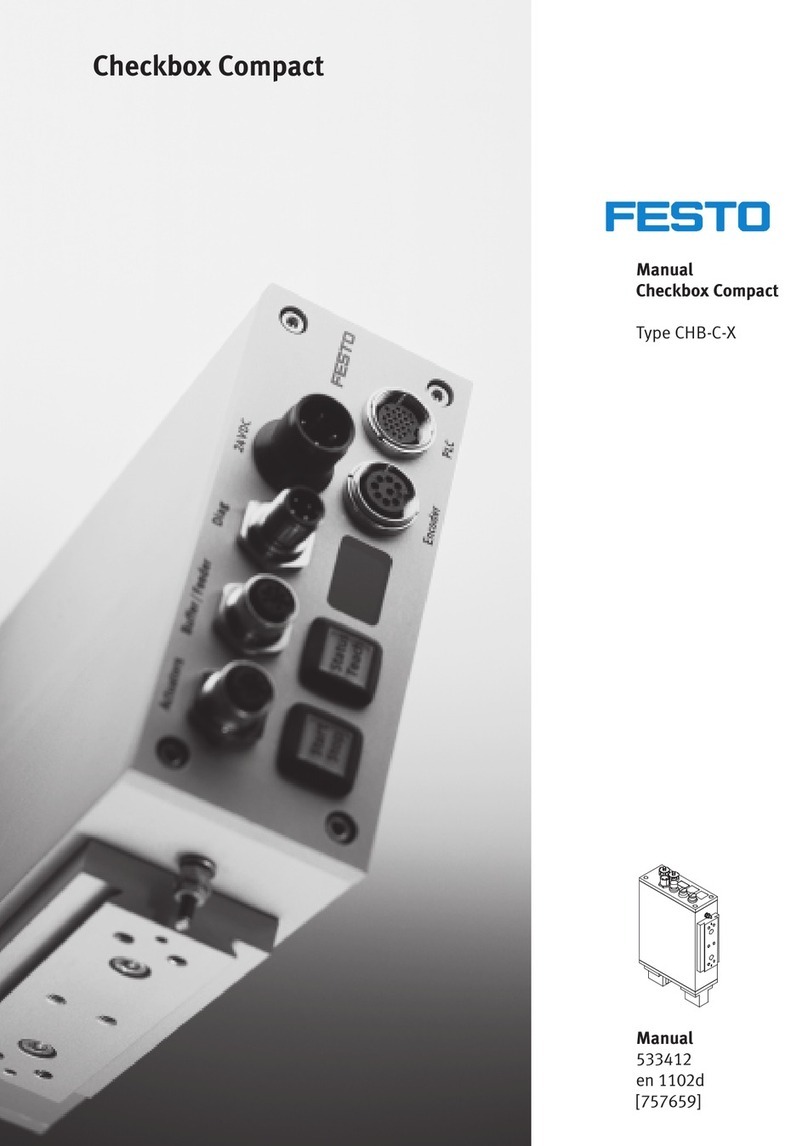
Festo
Festo Checkbox Compact CHB-C-X manual
